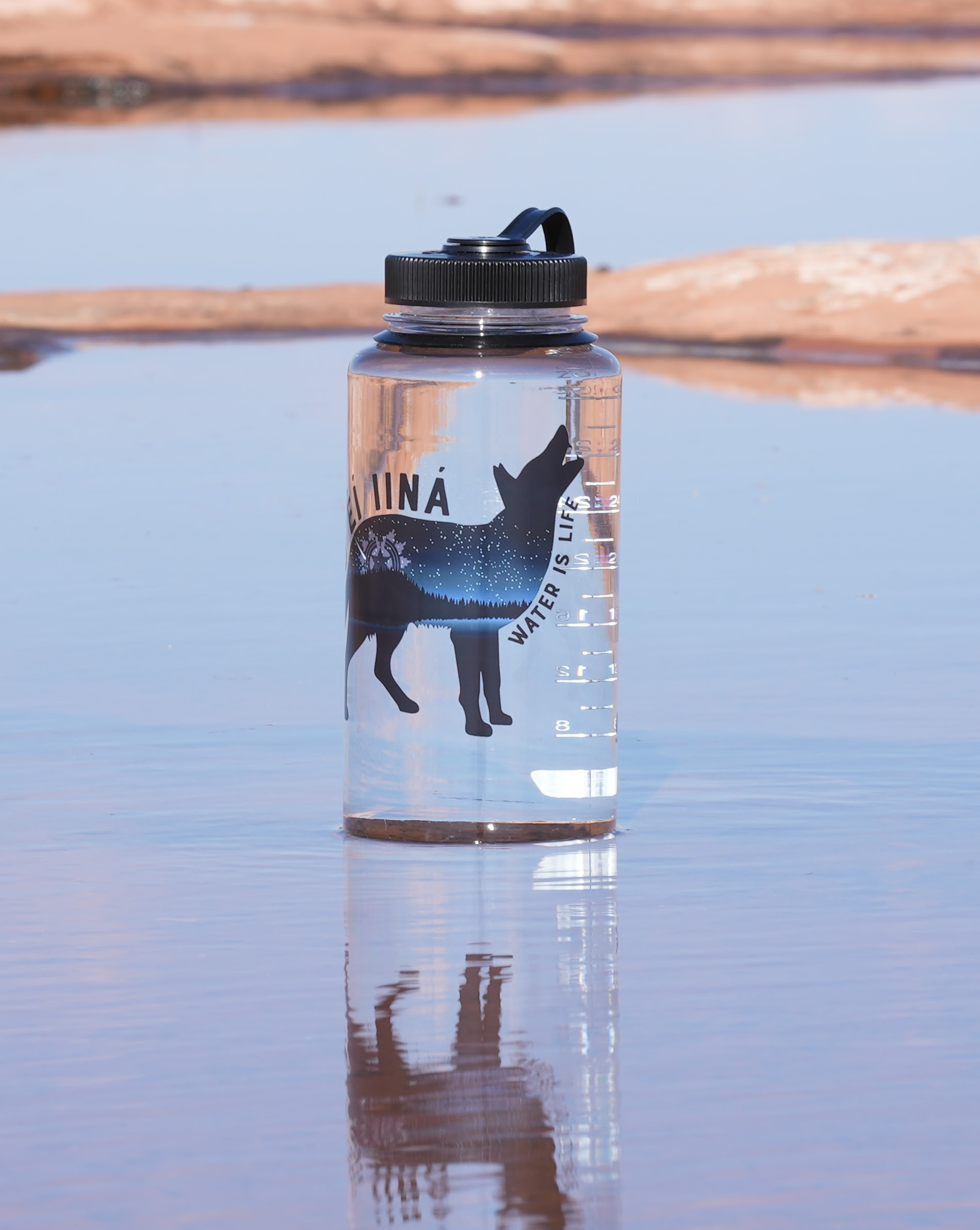
Nalgene Water Fund is an arm of Nalgene, a popular water bottle company that supports domestic communities struggling with access to clean water by partnering with grassroots nonprofits to raise funds and awareness.
The company originally partnered with Redhair in 2020, and $5 from every sale of the limited edition bottle he designed was earmarked to end the Navajo Nation’s water crisis. Together, they raised $80,000 to donate to DigDeep and Community Outreach and Patient Empowerment, two nonprofit partners on the Navajo Nation that work to make safe drinking water more accessible.
According to The Navajo Water Project, 30 percent of Navajo families live without running water, while one in three Navajo don’t have a sink or a toilet. Growing up on the Navajo Nation, Redhair told Native News Online that many residents accepted their lack of access to water as a way of life rather than an injustice.
“There’s a lot of people that still live out in very rural areas, and because of that, it’s hard for them to get…[water] infrastructure set in place because it’s so expensive,” Redhair said. “So most of the time, they have to haul their own water with their own vehicles. Showing people that [access to water] can be easier for them is something I think is important, as well as getting actual money to help and increase water accessibility.”
In his newest water bottle design, Redhair incorporates a traditional Navajo teaching. His design features a coyote silhouette filled with images of the starry night over Asaayi lake, a local lake in his hometown.
“The reason those stars are in the sky is because coyote kind of placed them there, in a way,” Redhair told Native News Online. He added that coyote stories are typically only told in the winter when the water bottle was originally slated for release.
The new limited-edition “Tó éí iiná” bottle is available exclusively at
Nalgene.com for $20. Five dollars from each purchase will again go towards fighting the water crisis on the Navajo Nation.
Redhair, currently earning his master’s degree in electrical engineering at Stanford University, said that purchasing the water bottle helps in messaging as much as it does in fundraising.
“When I’m out here in Stanford in such a very diverse area, I still get asked,’ Oh, wow, you really Native American? I didn’t know Native Americans still existed.’” Redhair said. “Creating that design with Nalgene— because Nalgene is a worldwide distributor— I think it’s very important to have a platform to be able to show that Native American people are still here, and there’s a lot of issues that we face that are pretty important.”
More Stories Like This
Chickasaw Artists Represent at Southwestern Association for Indian Arts in Santa FeZuni Partners Share Community-Led Delapna:we Project at ATALM 2025 Conference
Celebrating 50 Years: The Rockwell Museum Looks to the Future with "Native Now"
AMC Announces Return of Dark Winds for Season 4, Premiering February 15
Film featuring Teyton Colbert to hit theaters in November
Help us tell the stories that could save Native languages and food traditions
At a critical moment for Indian Country, Native News Online is embarking on our most ambitious reporting project yet: "Cultivating Culture," a three-year investigation into two forces shaping Native community survival—food sovereignty and language revitalization.
The devastating impact of COVID-19 accelerated the loss of Native elders and with them, irreplaceable cultural knowledge. Yet across tribal communities, innovative leaders are fighting back, reclaiming traditional food systems and breathing new life into Native languages. These aren't just cultural preservation efforts—they're powerful pathways to community health, healing, and resilience.
Our dedicated reporting team will spend three years documenting these stories through on-the-ground reporting in 18 tribal communities, producing over 200 in-depth stories, 18 podcast episodes, and multimedia content that amplifies Indigenous voices. We'll show policymakers, funders, and allies how cultural restoration directly impacts physical and mental wellness while celebrating successful models of sovereignty and self-determination.
This isn't corporate media parachuting into Indian Country for a quick story. This is sustained, relationship-based journalism by Native reporters who understand these communities. It's "Warrior Journalism"—fearless reporting that serves the 5.5 million readers who depend on us for news that mainstream media often ignores.
We need your help right now. While we've secured partial funding, we're still $450,000 short of our three-year budget. Our immediate goal is $25,000 this month to keep this critical work moving forward—funding reporter salaries, travel to remote communities, photography, and the deep reporting these stories deserve.
Every dollar directly supports Indigenous journalists telling Indigenous stories. Whether it's $5 or $50, your contribution ensures these vital narratives of resilience, innovation, and hope don't disappear into silence.
 The stakes couldn't be higher. Native languages are being lost at an alarming rate. Food insecurity plagues many tribal communities. But solutions are emerging, and these stories need to be told.
The stakes couldn't be higher. Native languages are being lost at an alarming rate. Food insecurity plagues many tribal communities. But solutions are emerging, and these stories need to be told.
Support independent Native journalism. Fund the stories that matter.
Levi Rickert (Potawatomi), Editor & Publisher

